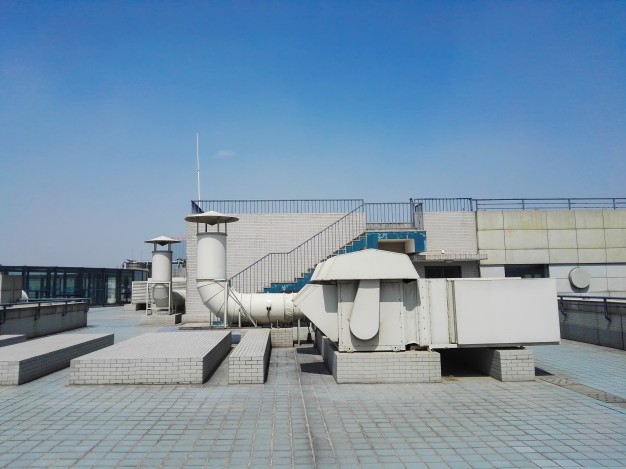According to ENERGY STAR®, in houses with gas-forced air heating and cooling systems, up to 30 percent of the air that moves through the ductwork is lost due to leaks, holes, and poorly connected ducts.
That’s 30 percent of your utility bill you’re paying that’s wasted and not providing the comfort you deserve for you and your family.
Maybe it’s time to start thinking about HVAC duct sealing products and what they can do for your home.
What is duct leakage?
When your home was first built, an HVAC installer came in and ran the duct system throughout your home. You’ve seen it before—the silver metal box-like structure that moves behind your walls, from the top floor to the basement. If the technician did a good job, every piece was put together like a jigsaw puzzle, properly sealed to make your home a comfortable and efficient place.
Over time, ductwork can start to develop problems for a number of reasons.
- Age can cause problems.
- Every time the system turns on and off, the ducts rumble and move to push the air through. Years of movement are bound to knock things loose.
- Seals eventually wear out.
Eventually, one leak can change the system enough to cause problems in other areas of your home. If your furnace or air conditioner is working harder than it needs to, it can cause your equipment to fail faster. And increase what you pay out each month on your utility bill.
How do you get to know if the ducts are leaking?
As a homeowner, it’s not easy to tell when your ducts are leaking. It’s not like a sink that will drip or a toilet that will flood. There might not be any indication at all. It silently builds, causing you to pay a few more dollars here and there on your utility bill. And you never realize it until a more significant problem materializes.
It might be difficult, but there are a few things you can watch for:
- When your HVAC system is running, some rooms feel colder or warmer than others.
- You notice your utility bills climbing higher month after month with no other explanation.
- You notice a lot more dust in some rooms of your home.
- You notice damage to the HVAC ducts where they aren’t buried in your walls.
Any of these could be an indication that you have leaky ducts. It may be time to consider HVAC duct sealing products.
How do I select HVAC duct sealing products?
What do you need to seal ducts properly? You can go to any big box store, even craft stores, and find rows of duct tape in every pattern and color of the rainbow. Yes, you can find duct tape just about anywhere. But duct tape isn’t what you should use to seal leaky ducts. It’s not the best HVAC duct sealing product for the job.
Other professionals recommend sealing holes, loose connections, or leaky joints with either mastic sealant or metal duct tape. These both have stronger sealant and add more strength to the system, giving you a longer-term solution to the problem. But these solutions can only be used on exposed ductwork.
Here at Entek, we take duct sealing to the next level and recommend to you a unique product called Aeroseal; it’s guaranteed to seal all the ducts, even the ductwork inside the walls. Tests have shown ducts are sealed up to 95 percent after using Aeroseal—that can be a vast improvement over what you currently have in place.
What’s more, it’s easy to install. A trained technician will seal up all parts of your HVAC system, blocking furnaces, fans, and grills so that only the leaks will be impacted. Then an aerosolized vinyl polymer is introduced into the ductwork. These particles find the leaks and attach themselves to block them out from the system.
It fixes the leaks and helps increase your energy efficiency from the moment it’s installed.
Are HVAC duct sealing products worth it?
You’ve been living in your home for years. You’re comfortable enough. You have other home maintenance projects you’d rather do. Leaky ducts can’t be that big of a problem … right? We have a lot of people ask that question.
Leaky ductwork is sometimes hard to understand. Out of sight, out of mind; it’s hard to believe what’s sealed up tight behind your walls can be causing such a problem.
But imagine almost one-third of all conditioned air your HVAC produces being lost to areas that don’t matter. It’s leaking in places your family doesn’t spend time. It’s seeping out through walls and outside your home. And you’re paying hundreds of dollars each year for this problem.
- Leaky ducts mean your HVAC isn’t working efficiently or at full capacity. It’s not bringing in the air to the system in the correct manner, nor is it delivering conditioned air where it’s supposed to go.
- It can leak air into the dustiest, dirtiest parts of your home—attic, crawlspace, or garage—before circulating that air back into the rooms of your home. Do you want to breathe in all of that?
- In some cases, duct leaks can even cause dangerous hazards. If a duct leak leads to depressurization in the winter months, it can pull combustion products like carbon dioxide back into your living quarters.
The only way to avoid all of that is to ensure your ducts are properly sealed.
This is what properly sealed ductwork provides:
When your ducts are properly sealed, they provide many benefits, including:
- Increased comfort—when ducts are properly sealed, you will enjoy consistent temperatures throughout your home.
- Improved indoor air quality—properly sealed ducts prevent particulates and contaminants from entering your HVAC system and blowing around your home every time your furnace or air conditioner turns on.
- Increased safety—any time you deal with natural gas, safety is of the utmost concern. When your furnace and air conditioner run, they release combustion gases into the system. Depending on where your leaky ducts are, they can cause back-drafting, which sends gas back into your home rather than releasing it outside. Properly sealed ducts prevent this from happening.
- Lower costs—what if your utility bills were cut by as much as one-third each month? What if you could extend the life of your furnace and air conditioner, two of the largest and most expensive appliances in your home? When your system is working at optimal levels, it will cost you less overall.
Are your home’s heating and cooling systems in top condition? Or are you searching for information about HVAC duct sealing products because you’re worried or have noticed a problem? If you have further questions about how well your HVAC system is working, we’d be happy to help.





